Why you should head to the South West’s largest city, Bristol
Bristol harbours a rebellious streak, an artistic bent and a heart of gold.
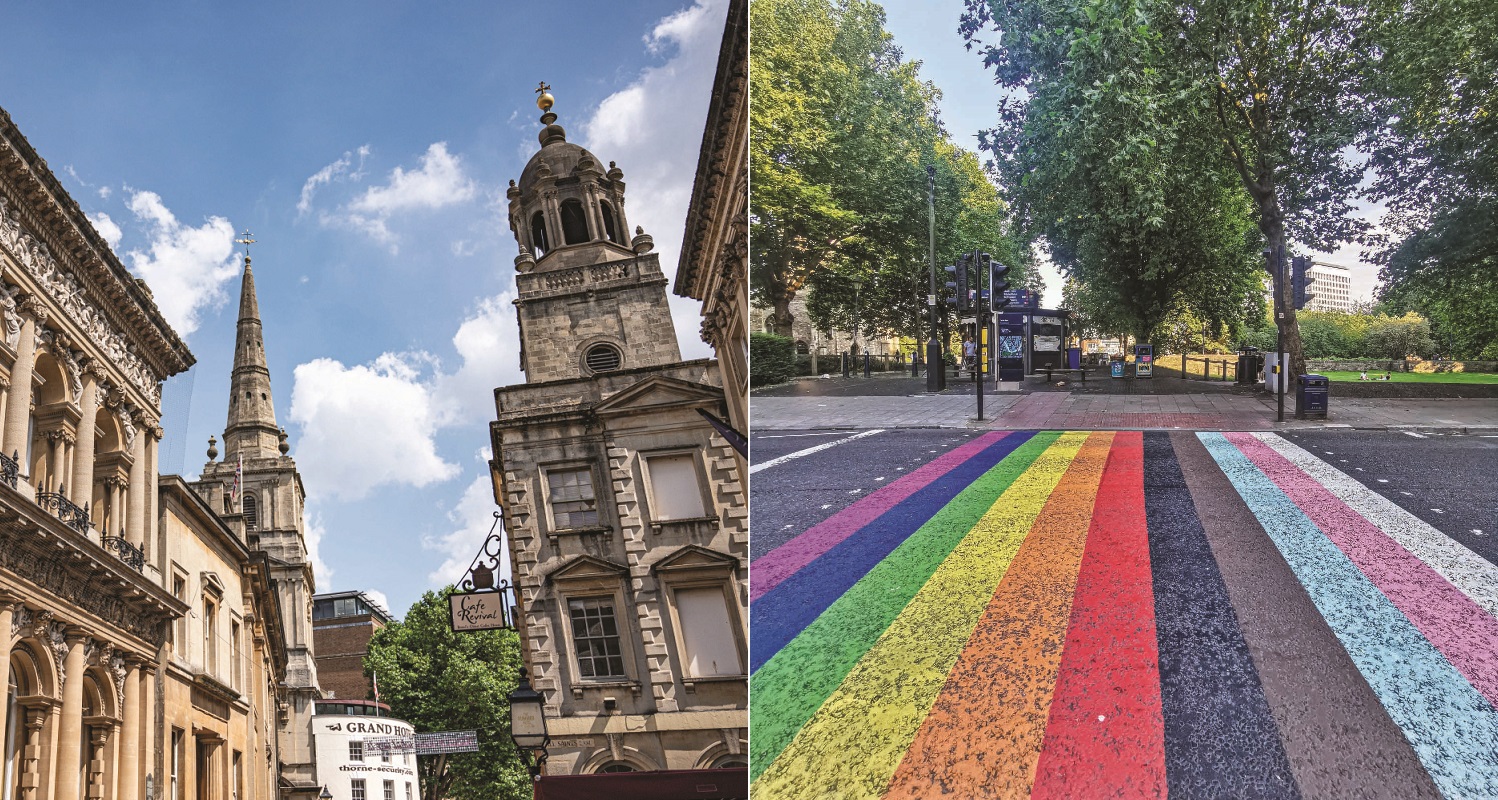
Words: Markus Bidaux
Looking down at the statue of Edward Colston covered in graffiti, I notice that the word ‘prick’ is written in blue spray paint across his long coat.
The 17th-century slave trader deserves worse, but it feels appropriate that a city synonymous with graffiti has used the medium in protest.
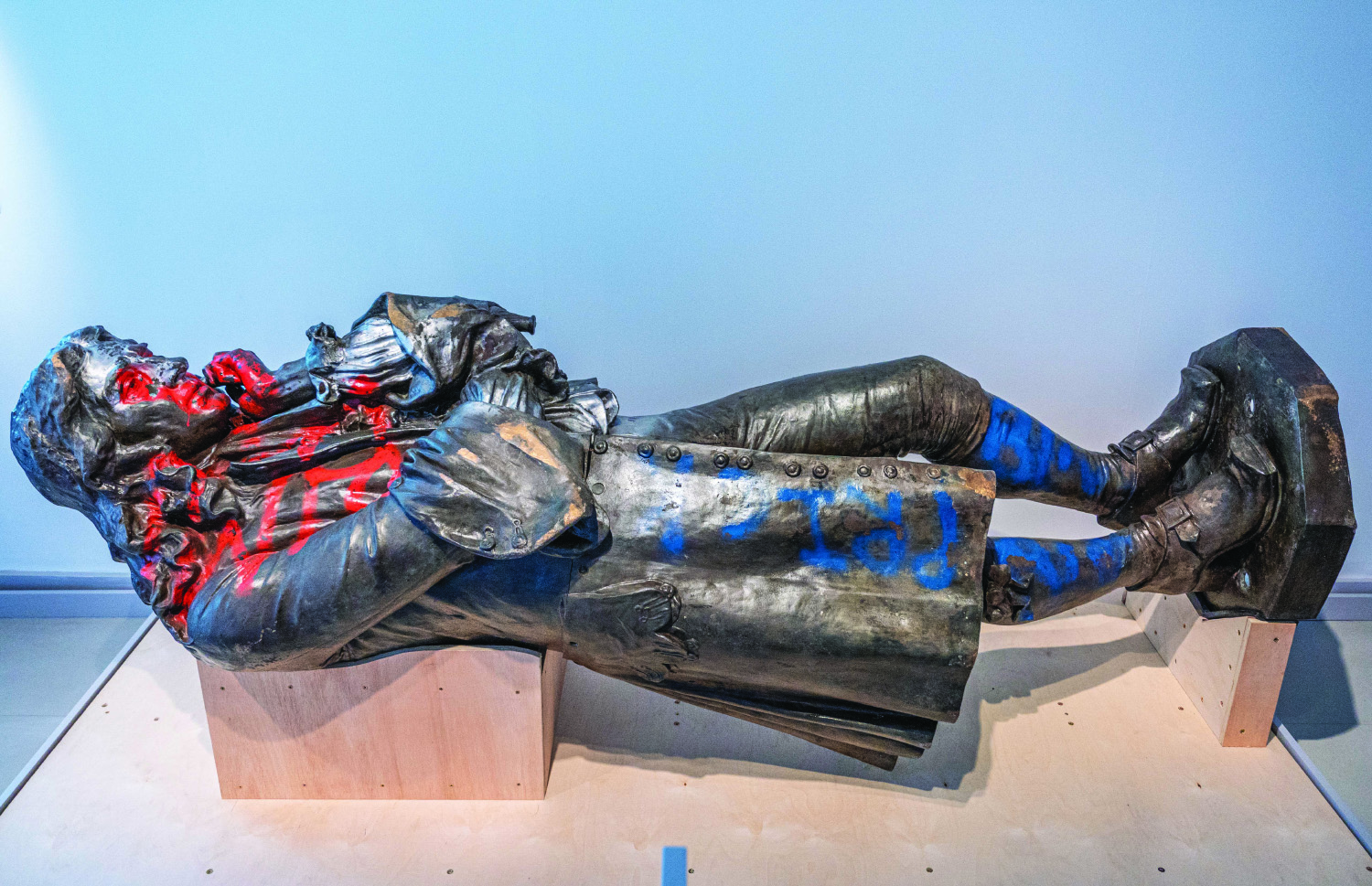
Edward Colston statue in M Shed
My boyfriend, Leigh, and I are in M Shed, a three-floor museum on the Avon River’s Spike Island. Housed in a 1950s’ dockside transit shed, the venue tells the story of Bristol — including that of the Colston statue being toppled by an impassioned crowd during last summer’s Black Lives Matter protests.
We learn that the bronze statue has a long history of hate — calls for it to be removed go back years. In 1998, “Fuck off slave trader” was painted across it, and in 2018, it was decorated with shackles — albeit knitted ones.
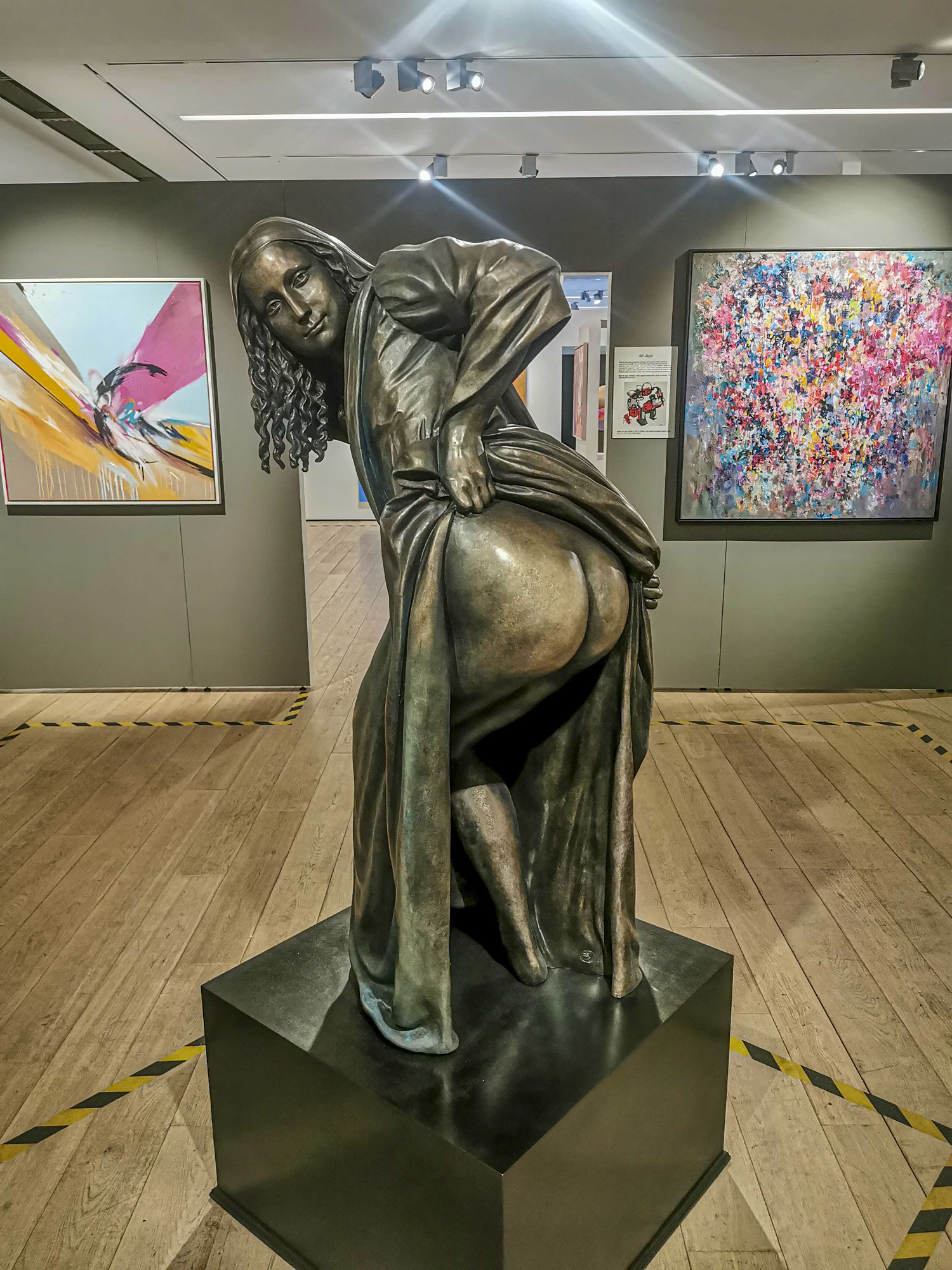
Vanguard graffiti exhibition at M Shed
Also at the M Shed is the Vanguard exhibition (on until the end of October). Devoted to the four-decade history and evolution of Bristol’s illegal street art scene, it takes us back to the early 80s and graffiti’s connection with music. The works of modern-day street artists are hung as if they are old masters — and they’re just as valuable, with several pieces by Bristol’s most famous son, Banksy, among them.
For lunch, it’s a stone’s throw to Cargo, a series of stacked shipping containers similar to London’s Boxparks, with restaurants and shops. After much debate over whether to go for Seven Lucky Gods’ Japanese Izakaya bar-style food or Root’s veg-focused fare, we opt for Gambas tapas restaurant. The Tortilla & Alioli oozes with slices of garlic, and after we’ve polished off the prawns in the Gambas Pil Pil, we use up every last crumb of bread to mop up the oil.
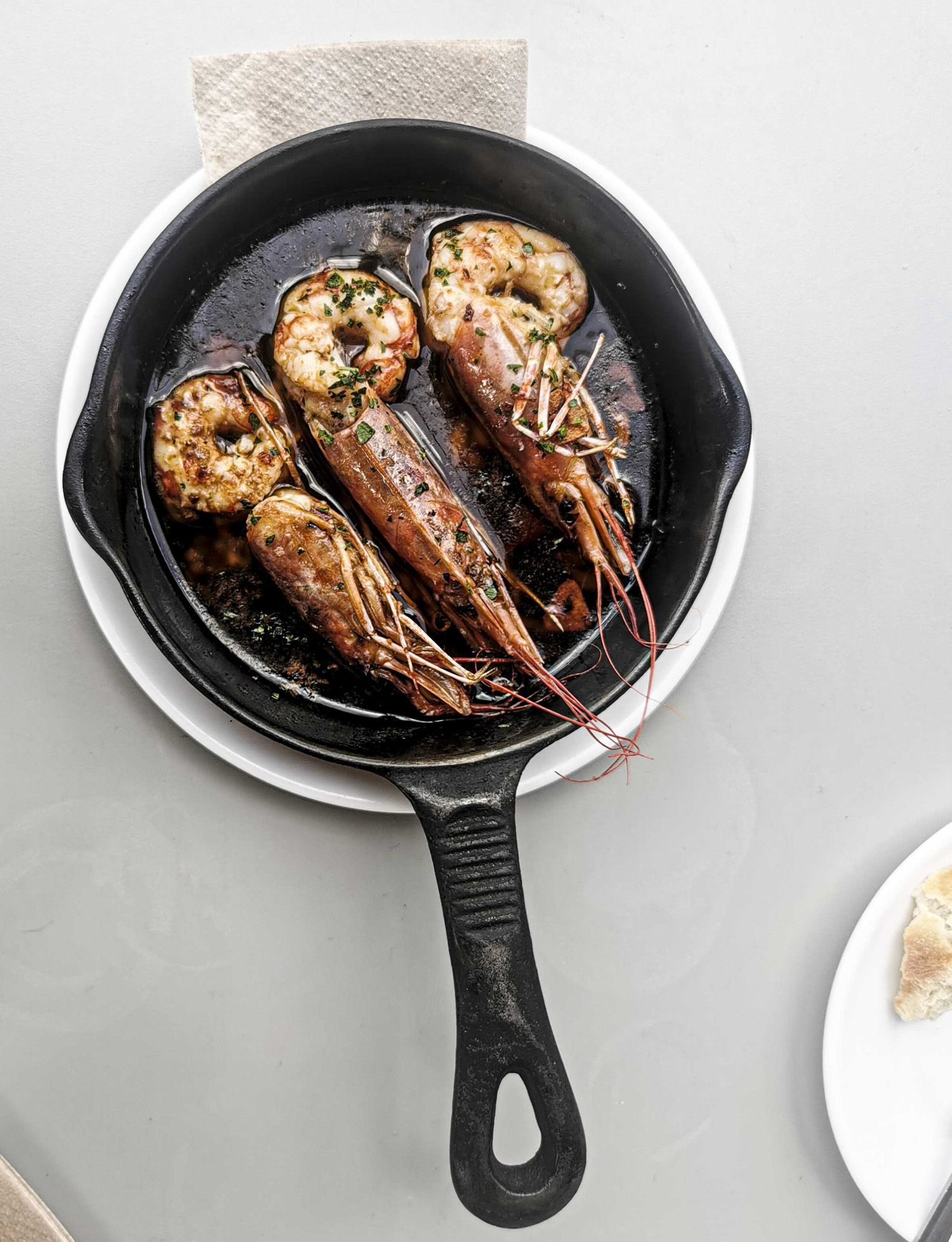 Gambas
Gambas
Pil Pil at Cargo
Further along Spike Island, fans of cruising (on the high seas) will appreciate the magnificent SS Great Britain, the world’s first luxury cruise liner and now a dry-docked museum.
We stroll on, passing the home of Wallace & Gromit, Aardman Animations, and pause to admire Banksy’s Girl with a Pierced Eardrum, before crossing back onto the mainland and into the leafy suburb of Clifton.
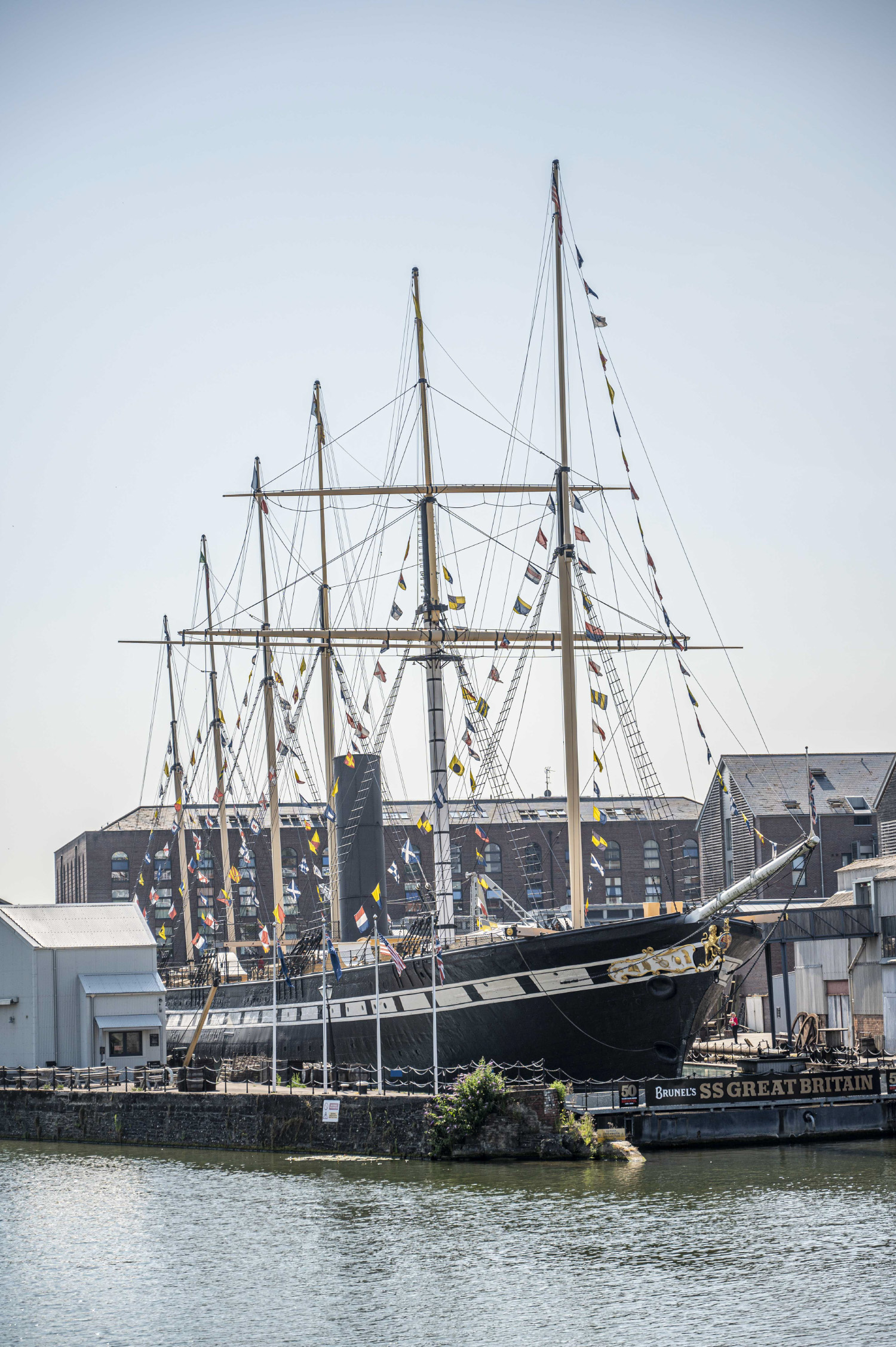 SS Great Britian
SS Great Britian
At the observation tower on Clifton Downs, we take in the view of the iconic Clifton Suspension Bridge. Designed by Isambard Kingdom Brunel — also the mastermind behind SS Great Britain — the bridge spans the Avon River and, like Brunel’s ship, it was an engineering revelation for its time.
It also has a curious claim to fame. On April Fool’s Day, 1979, David Kirke, a member of the Dangerous Sports Club, jumped off the bridge while attached to a bungee wire, dressed in a top hat and tails and holding a champagne glass. The first modern-day bungee jumper was swiftly arrested — but a new adrenalin sport was born.
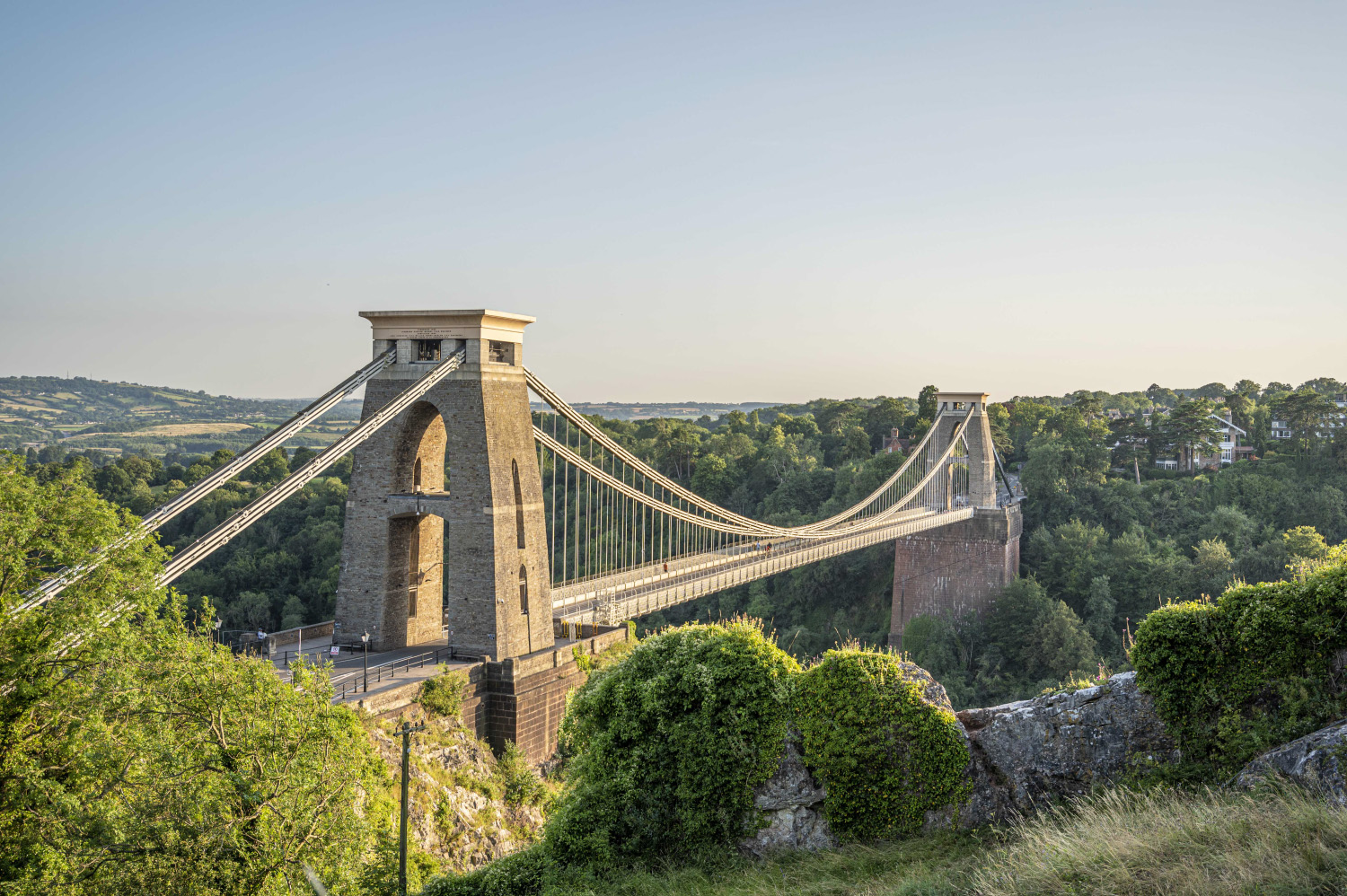 Clifton Suspension Bridge
Clifton Suspension Bridge
A more serene way to explore the gorge is to descend through the Giant’s Cave – accessed from the observation tower – which takes you to the edge of the valley.
The luscious green Downs run north for miles, but we make a beeline south to the charming shops of the Clifton Arcade before stopping for dinner at The Ivy Clifton Brasserie. The first Ivy of more than 20 to open outside London, its food, cocktails and, most importantly, Chocolate Bombe, do not disappoint.
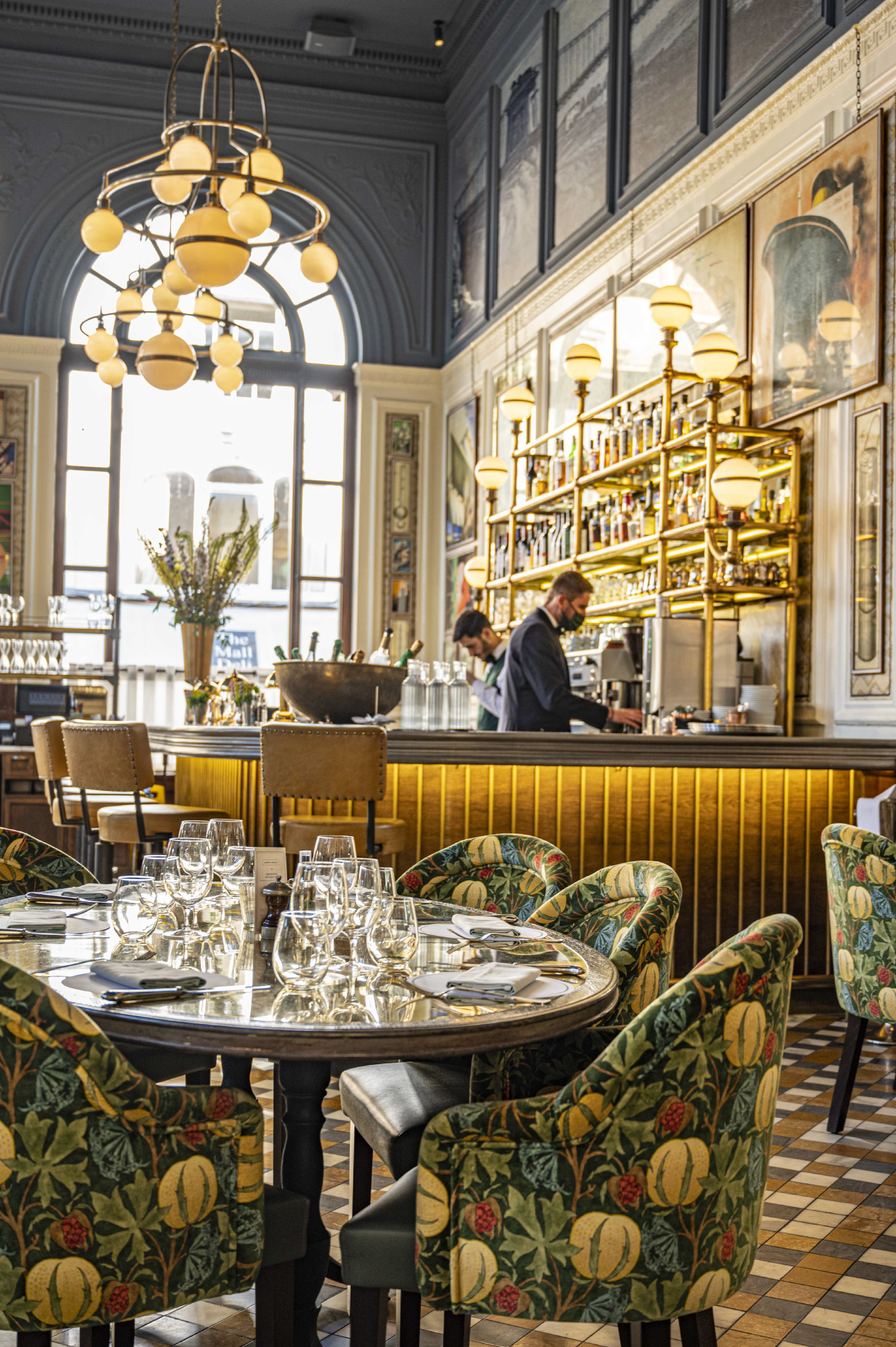 The Ivy Clifton Brasserie
The Ivy Clifton Brasserie
Afterwards, we head back to our hotel in Bristol’s Old City. Although we could hop on one of the popular peach-pink motorised scooters the locals hire to get around, we decide to stroll the downhill route through Birdcage Walk. Lined by trees that create an arched canopy, it’s incredibly romantic.
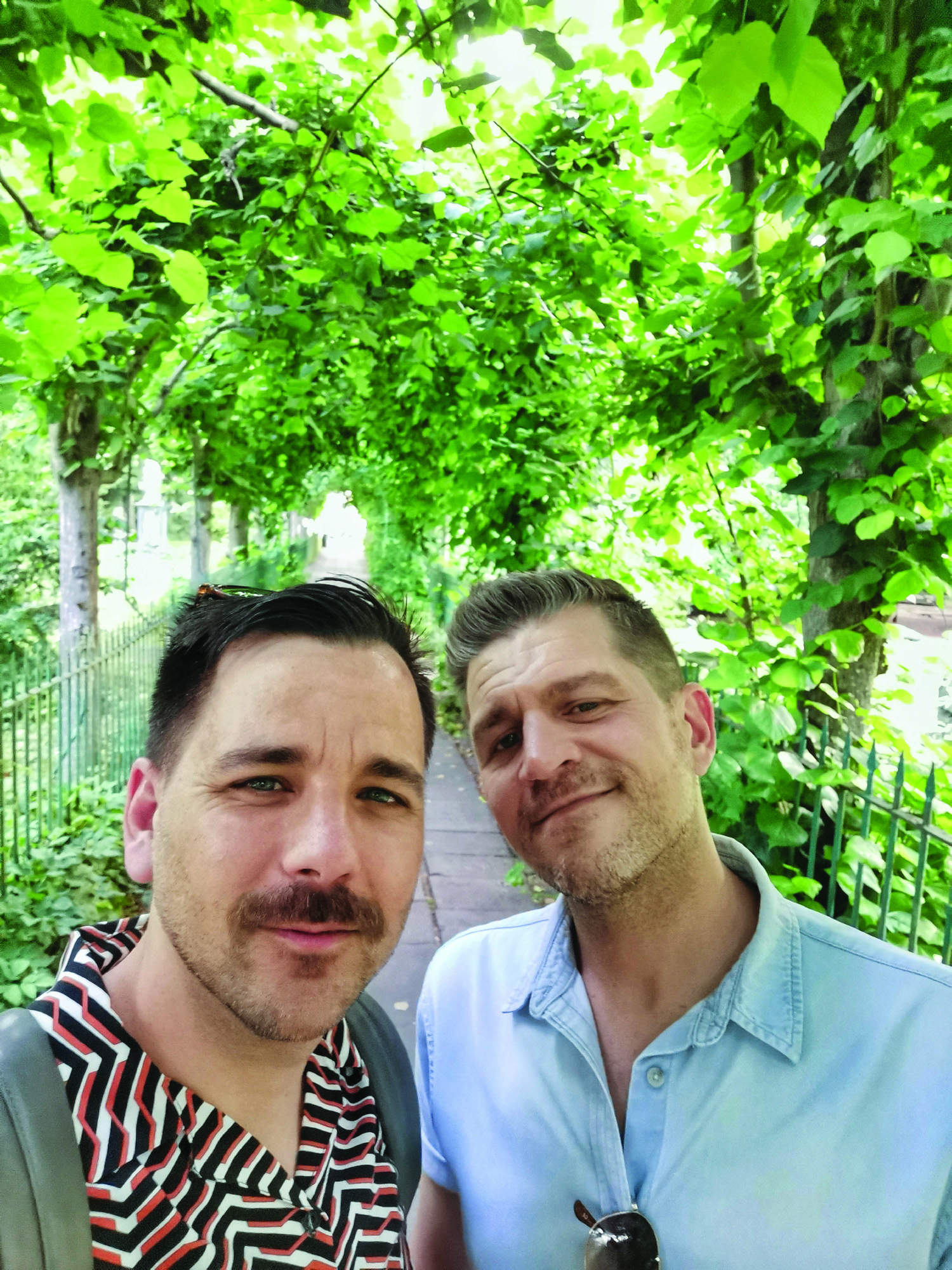
Markus & Leigh in Birdcage Walk
Built in the 1850s, the Harbour Hotel is on Corn Street, which has been around since Bristol was a medieval town. Corn was sold on the street here as long ago as the 13th century, before a grand Corn Exchange was built in the 1700s.
Today, the Exchange is home to stalls selling souvenirs, crafts and clothing. Behind it is St Nicholas Market, with rows of independent traders (Treasure Island Sweets and their Sour Strawberry Liquorice is a personal fave).
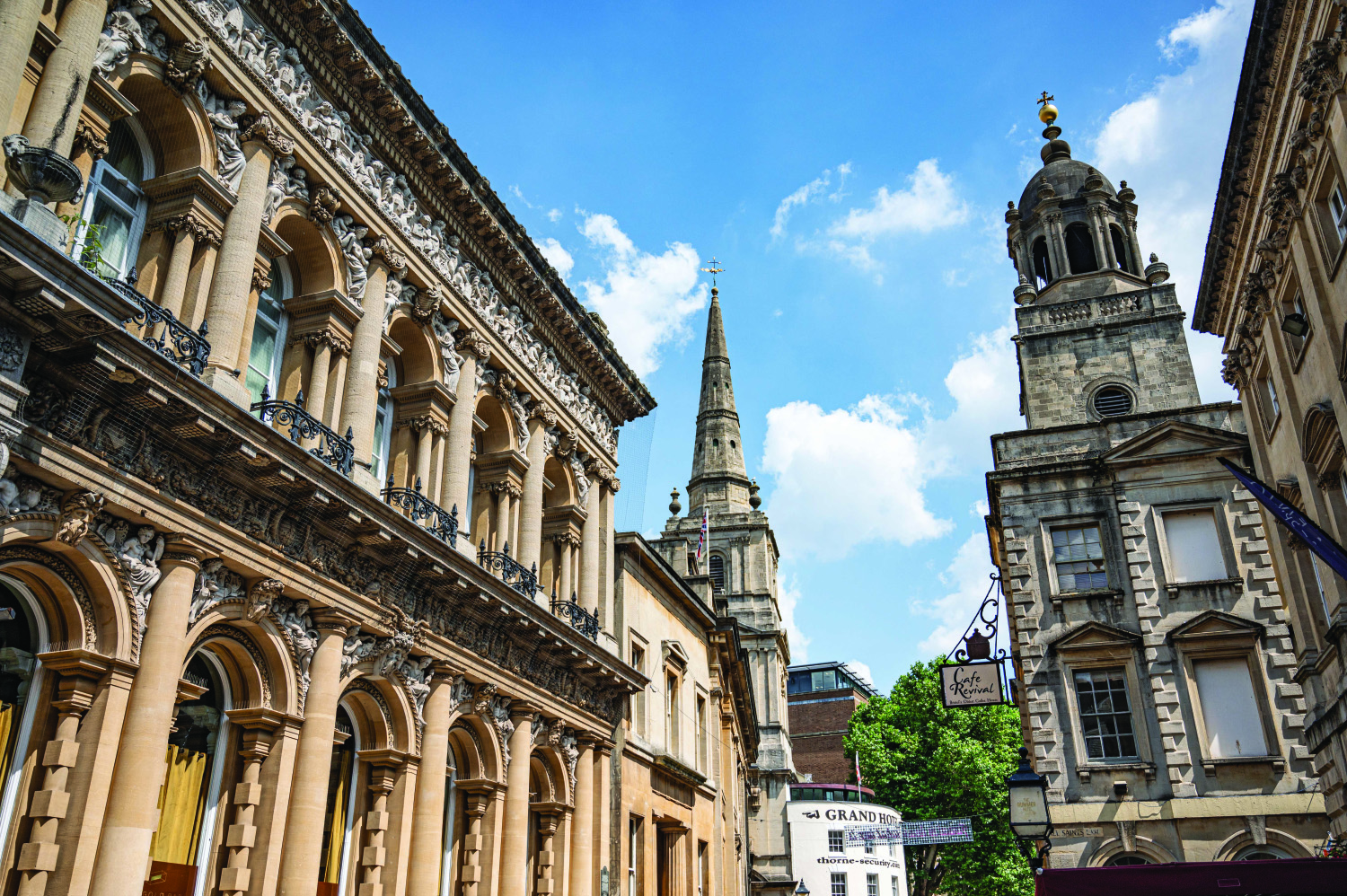
Corn Street
Our air-conditioned room is a luxurious sanctuary in the heatwave — we’re also grateful for the free Wi-Fi, The White Company toiletries and huge bed. In the morning, we take advantage of complimentary access to the HarSPA in the basement, complete with heated swimming pool, hydrotherapy pool, sauna, steam room, fitness suite and relaxation area.
Refreshed, we start the day by exploring Bristol’s floating harbour — so named because it’s protected from the huge tides of the Bristol Channel. Along the harbourside, we walk past the al fresco tables of bars and restaurants and the popular Watershed cinema and studio space. Across the water, groups of friends sit on the edge of the cobbled Narrow Quay, their legs dangling over the water in the shade of the trees, while boats slowly cruise the waterways — it’s an idyllic scene.
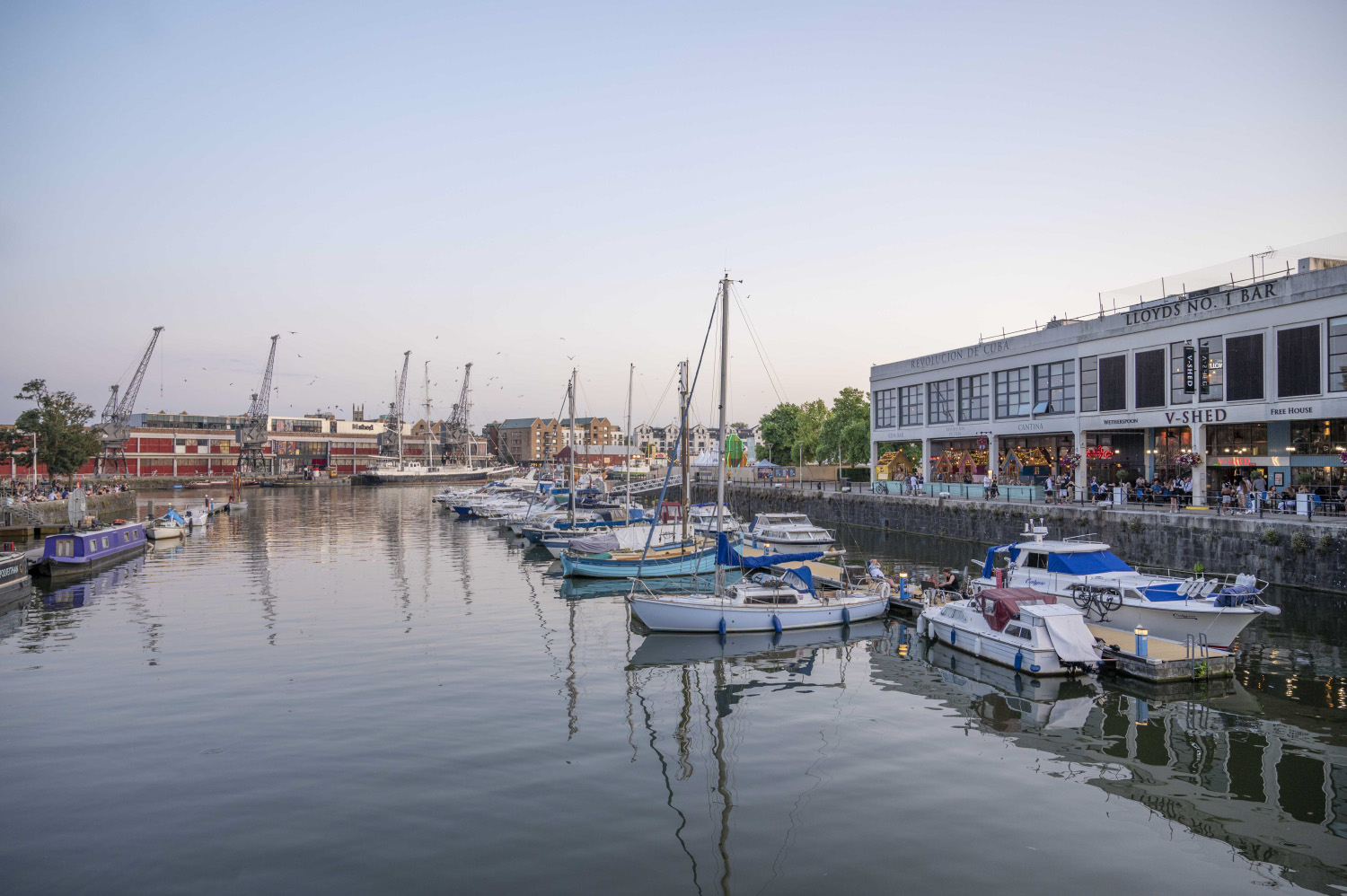 Bristol Harbour
Bristol Harbour
Our next stop is College Green, a small park near Bristol Cathedral. Here we spot two teenage girls walking around with an image of the Black Lives Matter’s fist clenching a rainbow flag on it.
They tell us they’re part of the NCS (National Citizen Service), a summer programme for 16-17-year-olds, and that they’re promoting a bake sale in aid of LGBTQ+ and anti-racism charities. Although only one of the group is an out member of the LGBTQ+ community, the rest say they all voted to support those causes. It gives us a warm glow to see young people doing more than just posting a hashtag or Instagram Story to spread the message of equality.
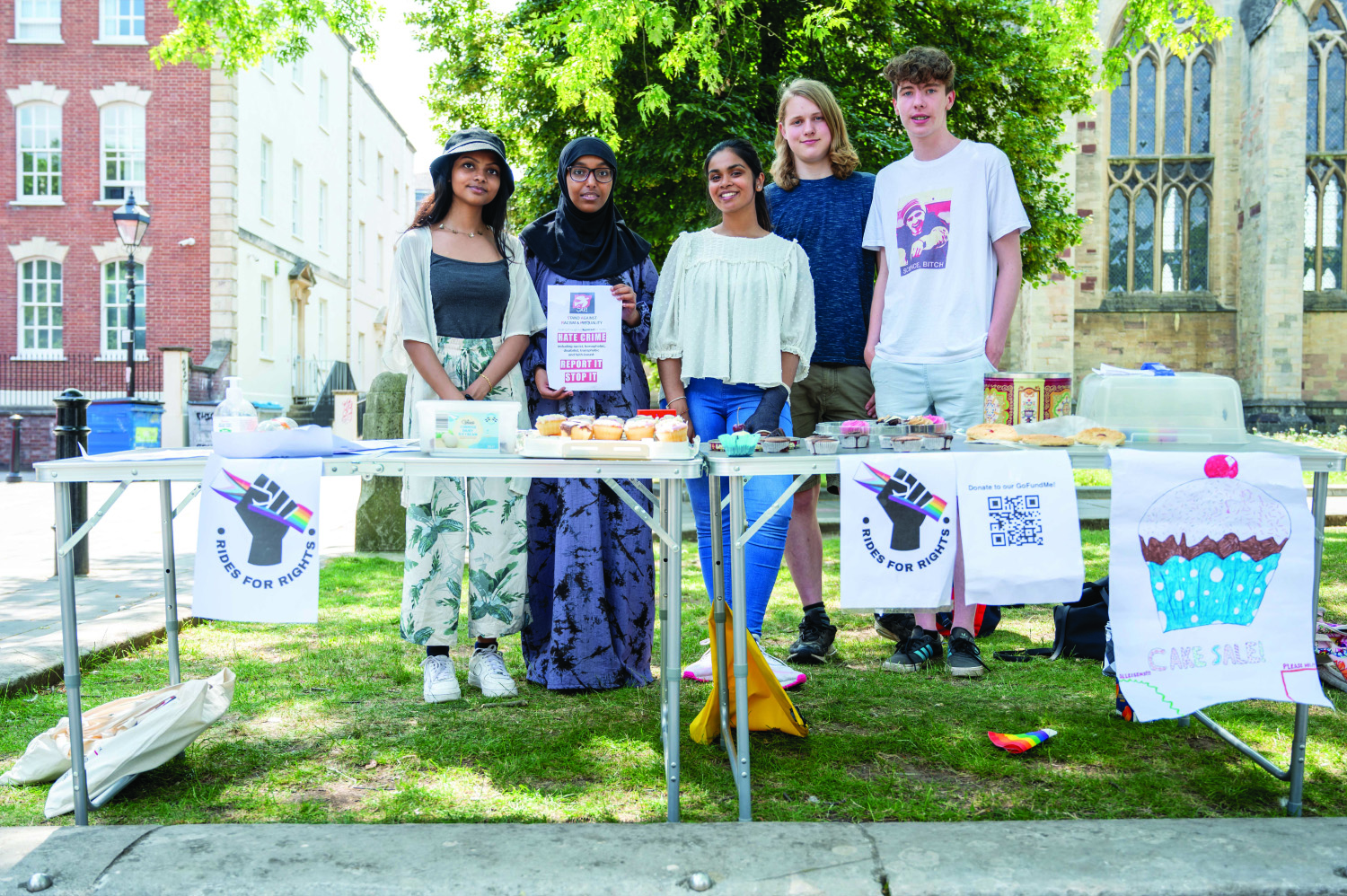
The Nation Citizen Service bake sale
En route to The Old Market Assembly, a venue with a theatre, bar, pizzeria and bakery, we walk through Castle Park and traverse Bristol’s new rainbow crossing at the same time as a group of lads. We overhear one say how nice it is that the NHS is being recognised, but that there are too many colours; to which another replies that it’s actually the Pride flag and the extra colours are for the trans and BAME communities. It’s encouraging to see members of the (presumably) straight community recognising the Progress Pride flag.
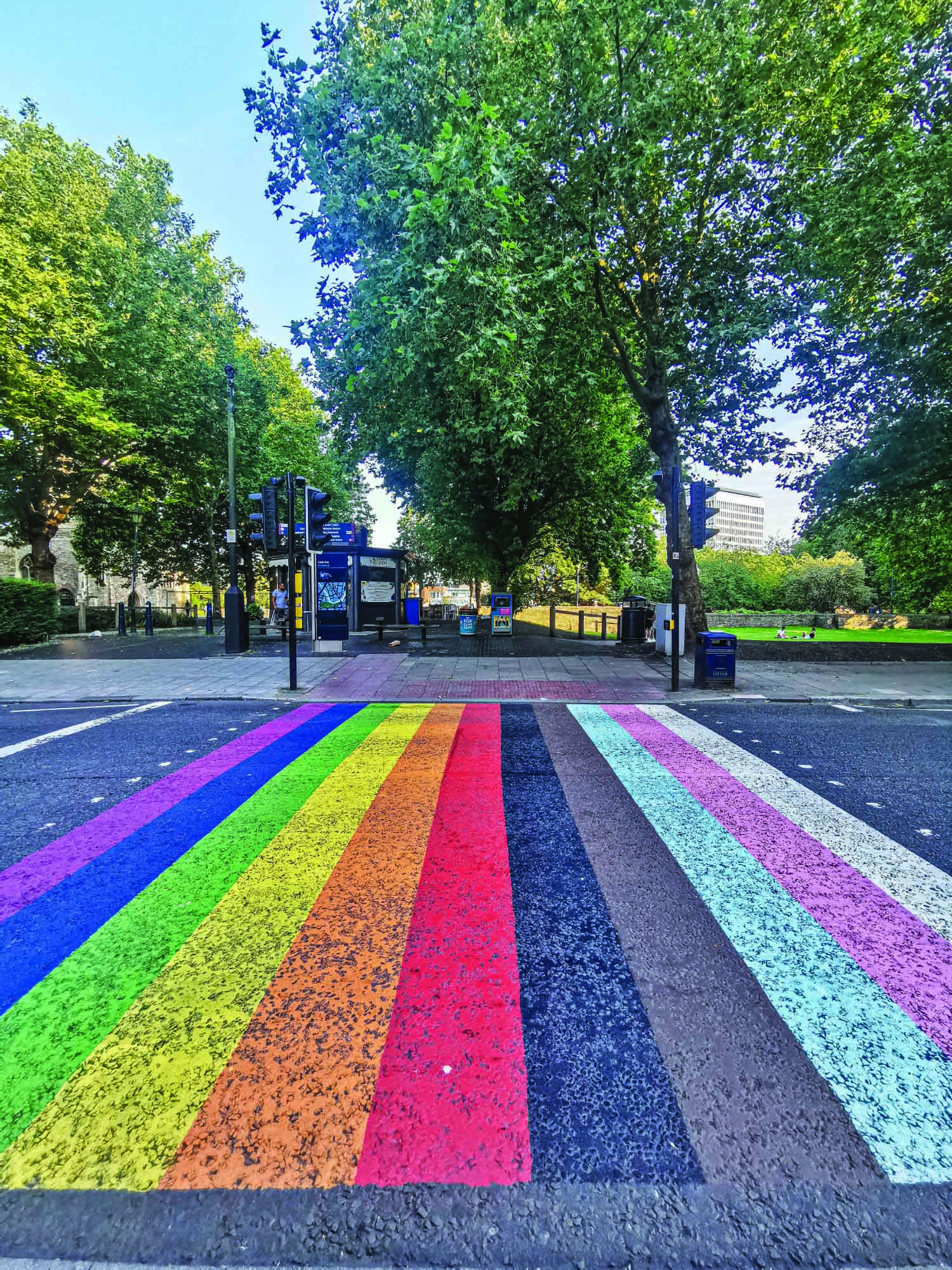
Bristol’s new Progress Pride rainbow crosswalk
At the restaurant, we are greeted by the friendliest of waiters and then gorge on pizzas on the roof terrace before meeting Daryn Carter, the director of Bristol Pride. He arrives with a big smile under his sea blue-dyed hair and tells us he is in recovery mode following the two-week celebration.
Daryn arrived in Bristol in 2001 from London after his partner accepted a job in the city. Back then, there was no Pride. Although there had been similar events as far back as the 70s, there had been none since the mid-90s. So, in 2009, he helped launch a new era of Pride for Bristol.
“We had Pride in Castle Park, which is too small for us now. We had 400 march in the parade and about 4,000 attended and we were really happy with that. Then, in 2019, we had 18,000 in the parade and 40,000 at the festival [on Clifton Green],” Daryn explains.
He tells me they work very closely with the local trans community, but that a separate Trans Pride South West event will run in November to tie in with Trans Day of Visibility. It feels right that Bristol should host the event as it was home to Michael Dillon, the world’s first person to complete gender reassignment surgery, back in the 1940s.
Daryn predicts that Kiki Bristol, the local Queer, Trans and Intersex People of Colour group, are on their way towards creating their own Black Pride-style event here, too.
Back out on Old Market Street, Daryn points out where some now-closed queer venues used to be, but we’re happy to report that there are several still holding their own, including Bristol Bear Bar, which claims to be the first and only purpose-built gay bar for bears in the UK, and the new Old Castle Green pub with its beer garden and espresso martini on tap (hello, hangover).
On our final day in the city, we join the two-hour Where The Wall street art tour led by Rob Dean, who has been involved with the graffiti community for 35 years. Appropriately, it starts with a Banksy. The artist stencilled the black-and-white Well Hung Lover (featuring a naked man dangling one-handed from a window ledge as his lover’s husband tries to spot him from the window) while scaffolding was covering the wall opposite Bristol’s City Council building.
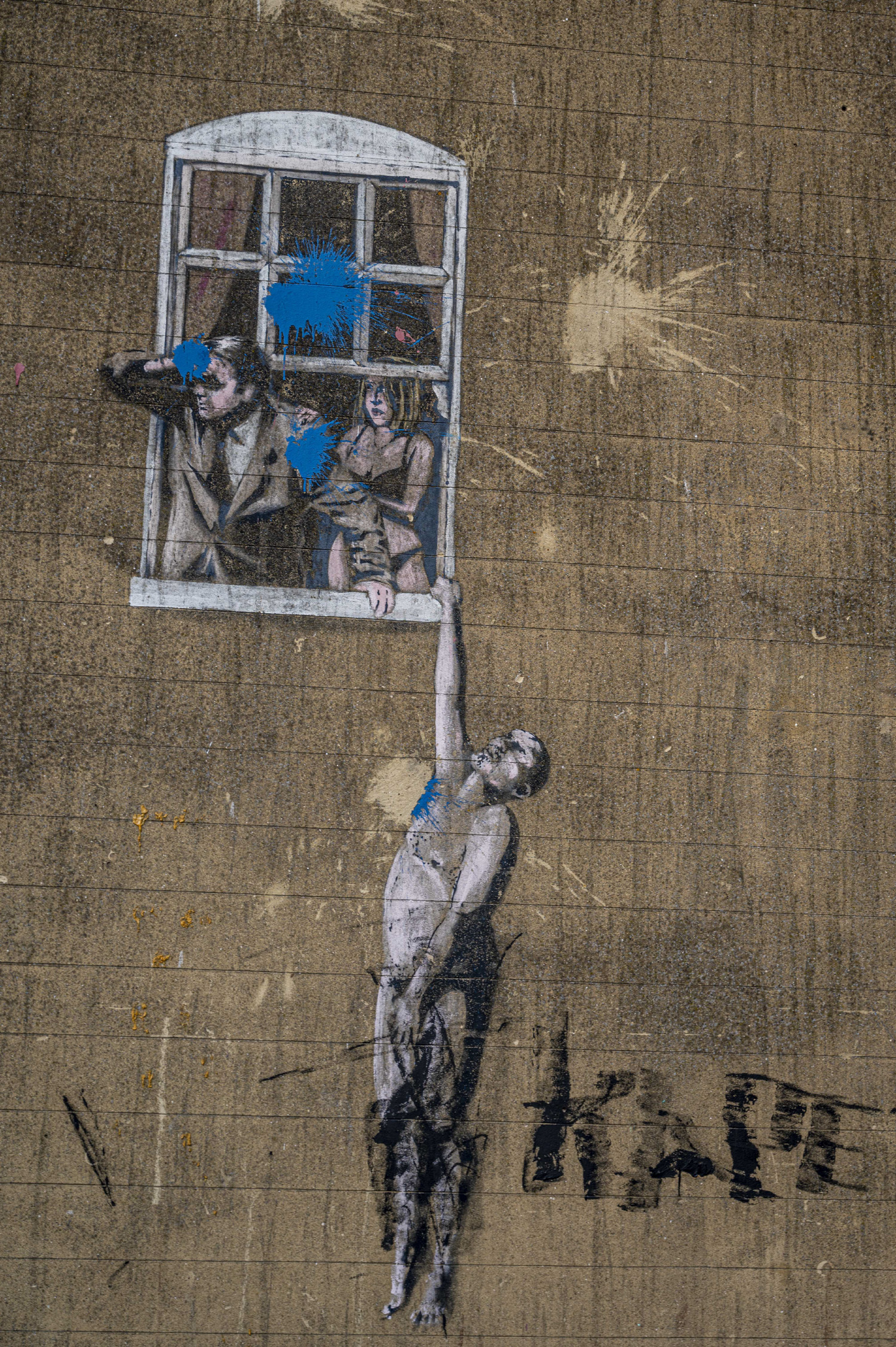
Banksy’s the Well Hung Lover
When it came down, the councillors were given quite the shock, but by this point Banksy was a household name, so the piece stayed in place. I am dismayed to see it has blue paint splatters on it from a targeted paintball drive-by and a tag by another artist named Kape. It is just the first of many murals we pass that have been tagged by other artists — an act I never really understand.
Next, we walk through Nelson Street, where, in 2011, the See No Evil street art festival took place — the biggest of its kind in the UK. Some of the artworks that remain stretch across eight stories. A stunning work by Irish artist Conor Harrington, titled The Duel of Bristol, highlights the city’s past links with pirates, while also proving beyond doubt that graffiti is as impressive as any piece of fine art.
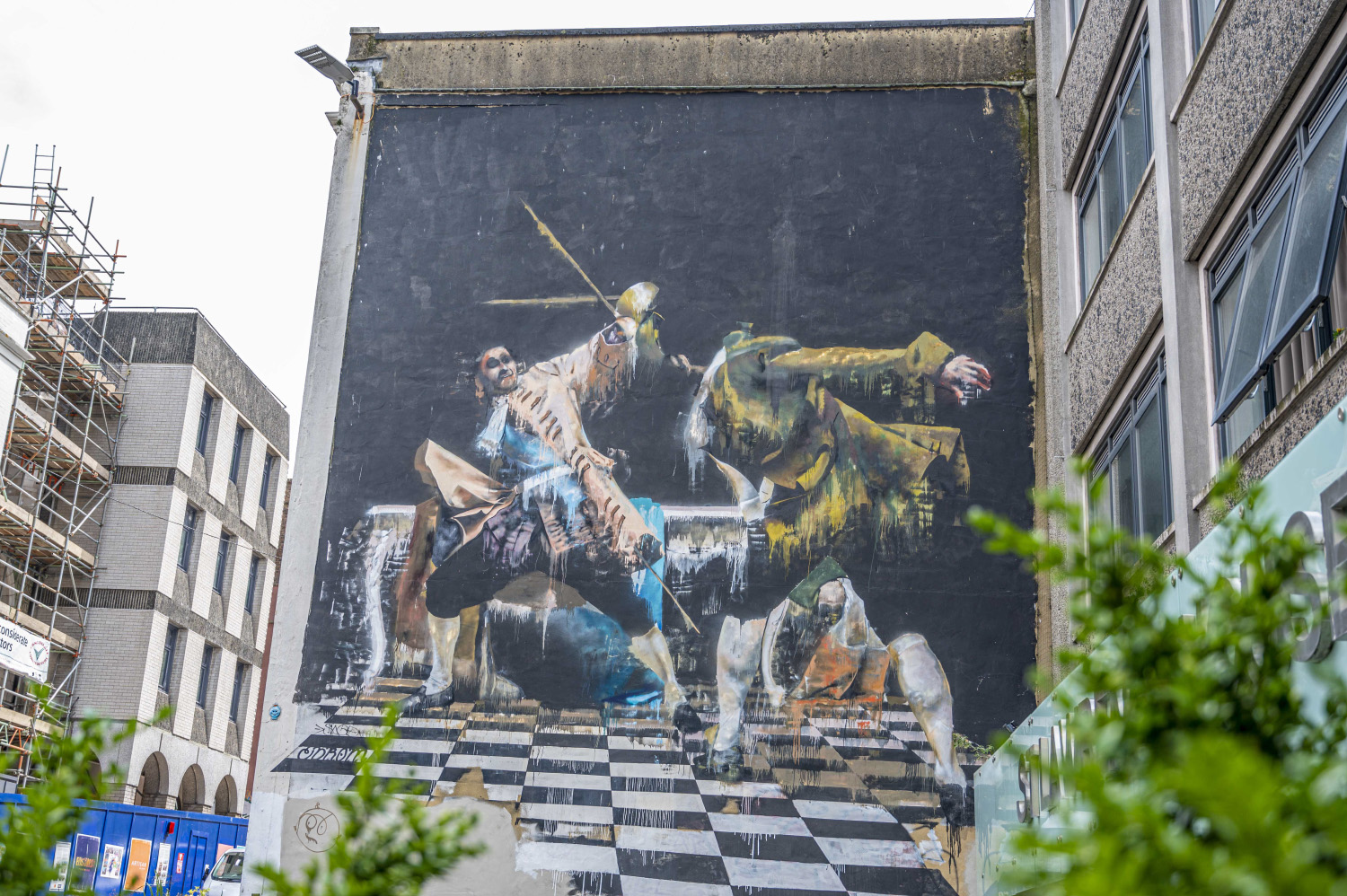 Conor Harrington’s The Duel of Bristol
Conor Harrington’s The Duel of Bristol
I ask Rob if there are any prominent LGBTQ+ artists, but he says he is not aware of any. He reports that female artists are now having a huge impact on the scene, which for decades was very male-dominated, so perhaps that will make space for more queer artists to pick up a spray can.
After ducking into a tunnel, we pop out on Gloucester Road, the UK’s longest street of independent shops and restaurants, where practically every building is adorned with graffiti. We finish the tour with Banksy’s The Mild, Mild West, depicting a teddy bear about to throw a Molotov cocktail at a group of riot police. Rob tells us that when it was originally painted, the teddy bear (representing the people of Bristol) was holding a joint, but after a local party was broken up by police and revellers threw Molotov cocktails at the officers, Banksy revised the work.
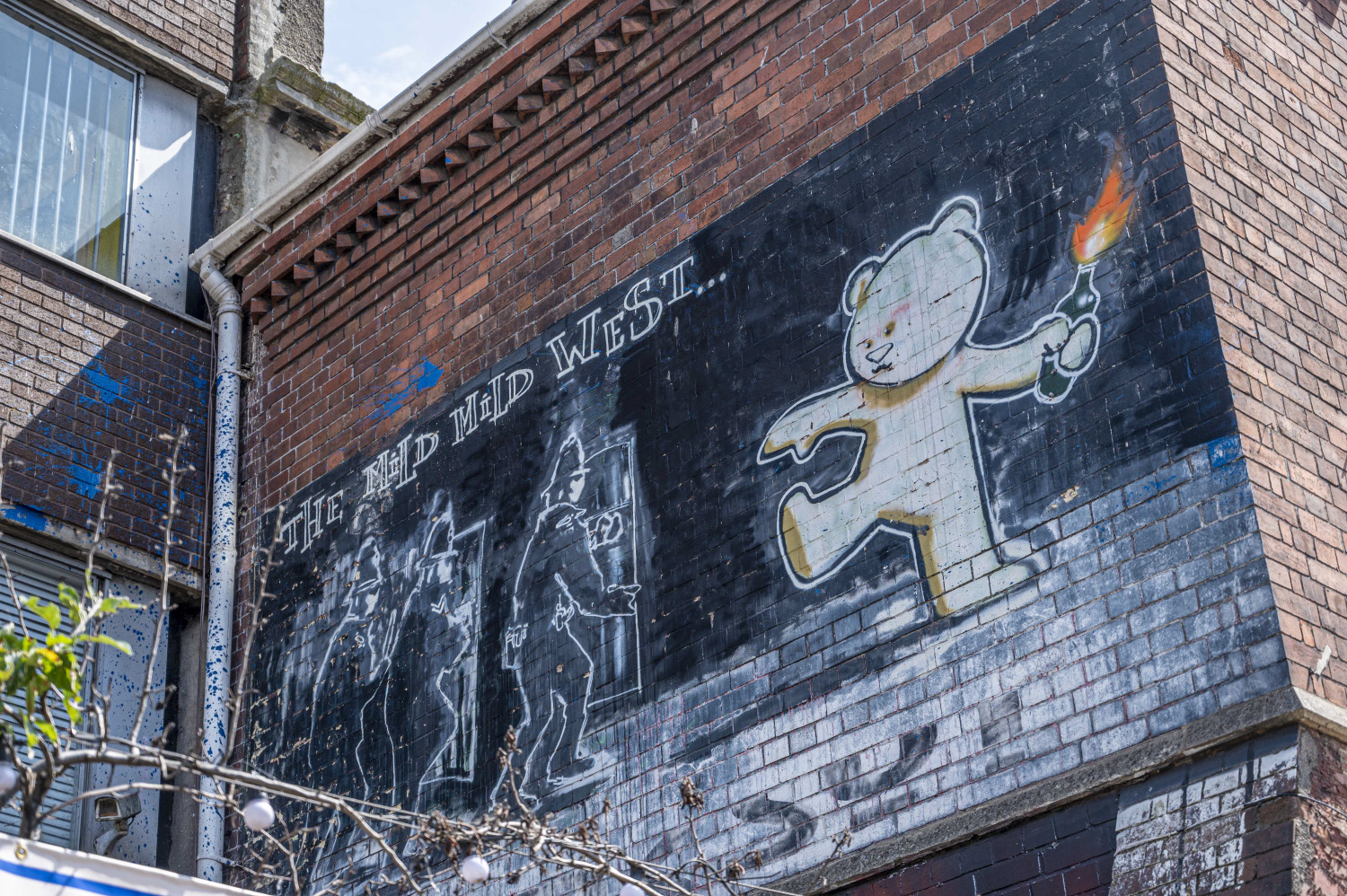 Banksy’s The Mild, Mild West
Banksy’s The Mild, Mild West
Opposite the Banksy is a fresh lick of paint, also with a political theme. Created by artist Mr Cenz, it is a mural of Jen Reid, the Black Lives Matter activist who, straight after the Edward Colston statue was torn down, stepped onto the plinth and raised her fist in a Black Power salute. The following July, a 3D printed statue of Jen was erected on Colston’s former home — only to be quickly removed by the City Council.
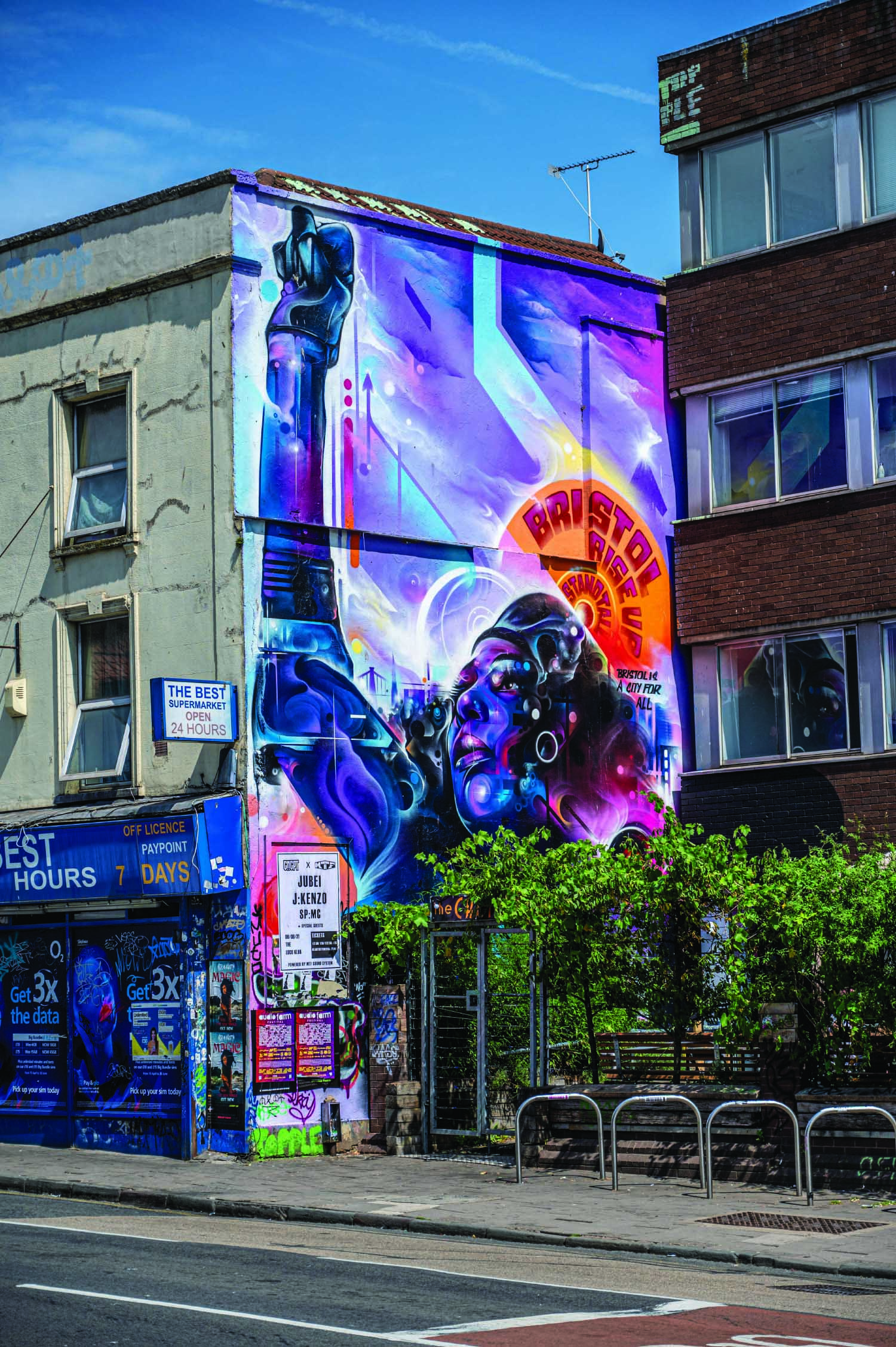 Mr Cenz’s mural of Jen Reid, the Black Lives Matter activist
Mr Cenz’s mural of Jen Reid, the Black Lives Matter activist
On the mural there is a line written by local poet Lawrence Hoo, “Rise up Bristol, stand tall… Bristol’s a city for all.” Hear, hear to that.
For more ways to Escape the Everyday this summer follow @visitengland on social channels #VisitEngland #EscapeTheEveryday or head to visitengland.com/escape
Visitors are advised to always check individual websites and government guidance for the latest information. National restrictions are currently in place. Check out visitengland.com
